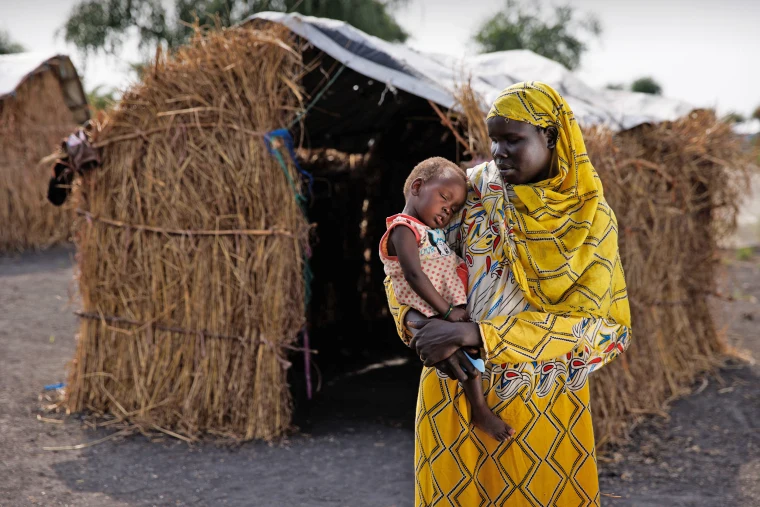As the world’s gaze remains fixed on hotspots like Gaza and Ukraine, Sudan’s prolonged civil strife, now eclipsing a year, continues to wreak havoc on its 49 million inhabitants. A staggering one-third of the populace grapples with food insecurity, while a dire 5 million teeter on the brink of famine, painting a grim portrait of Sudan’s overlooked humanitarian catastrophe.
Reports emerging from the embattled nation chronicle scenes of desperation as families resort to desperate measures to quell hunger pangs. From scavenging mango leaves to consuming cats and soil, Sudanese civilians are resorting to extreme measures to survive the ravages of conflict-induced famine.
The clash between the military junta and the paramilitary Rapid Support Forces (RSF) has only exacerbated the suffering of civilians. Both factions, motivated by self-interest, have exploited aid channels, looting vital shipments and exacerbating the crisis. Despite official assurances of food security, the stark reality on the ground tells a different story, with malnutrition-related deaths, particularly among children, soaring.
As Sudan braces for the lean season between May and September, the specter of food shortages looms large, intensifying the risk of starvation for millions. A sobering report by a Netherlands-based think tank paints a grim outlook, projecting catastrophic hunger scenarios that could engulf up to 40% of Sudan’s population if immediate action is not taken.
Despite mounting evidence of the crisis, humanitarian access remains restricted, and aid delivery hindered by the conflict’s relentless grip. With the lives of 20 million Sudanese hanging in the balance, the international community must heed the silent cry of Sudan’s suffering populace. Swift and decisive action is imperative to avert further tragedy and alleviate the profound anguish endured by the Sudanese people. Sudan’s plight may be obscured by global headlines, but its humanitarian crisis demands urgent recognition and intervention on a global scale.






